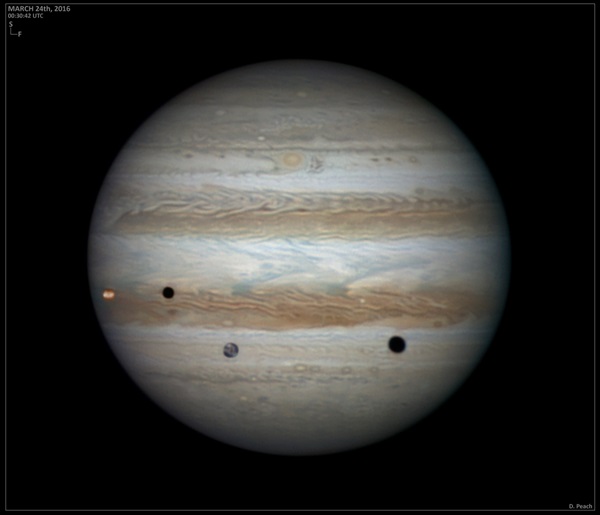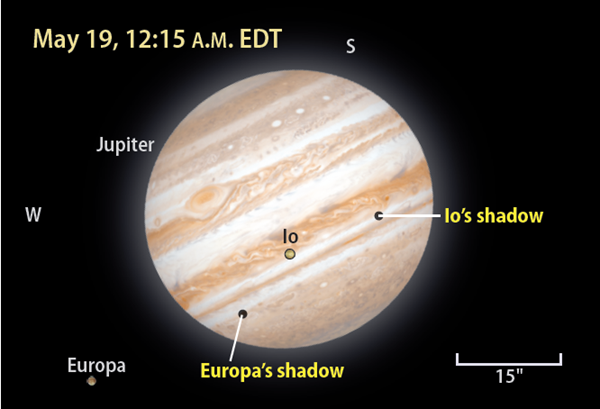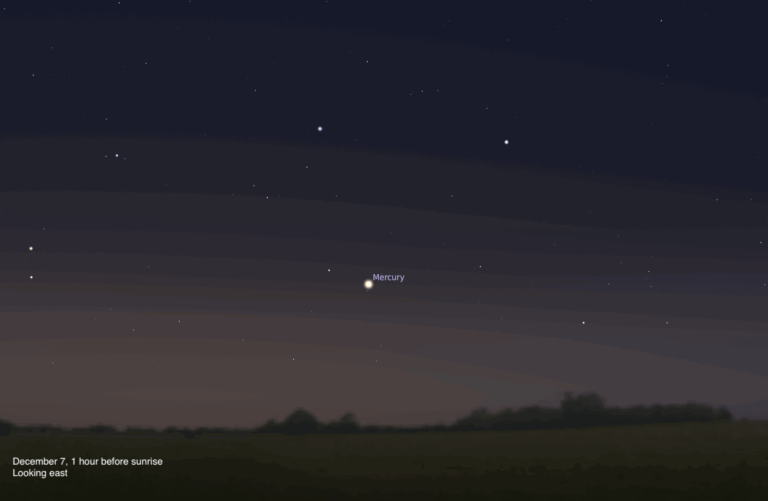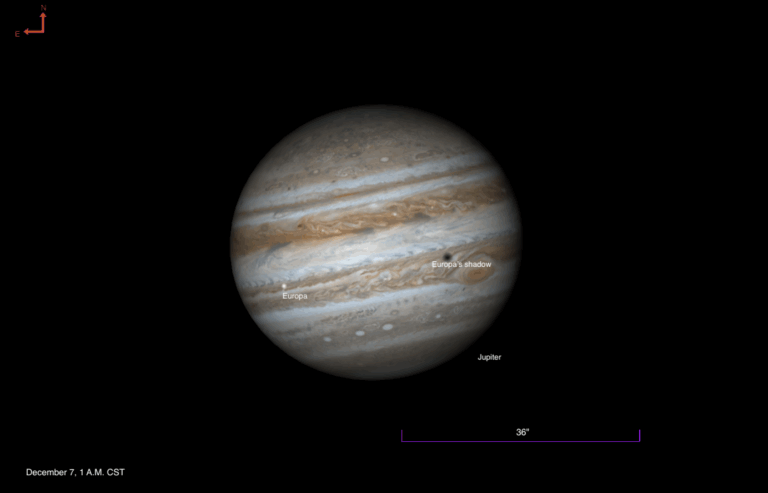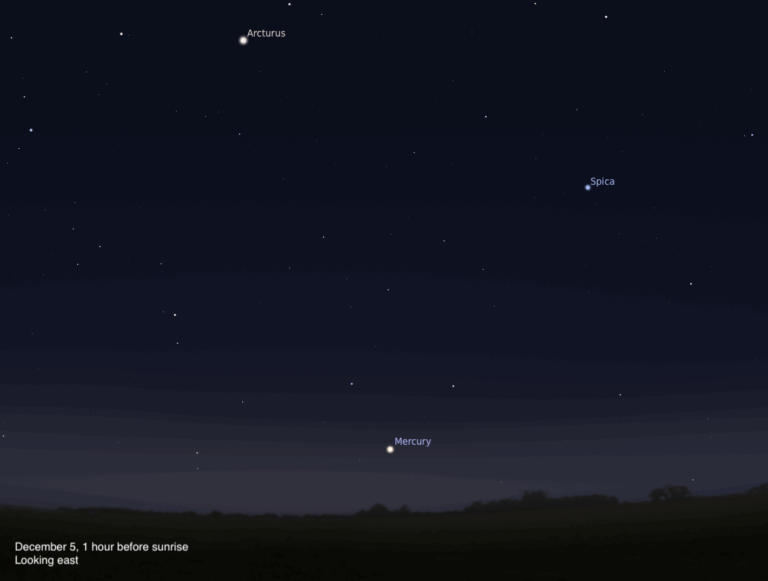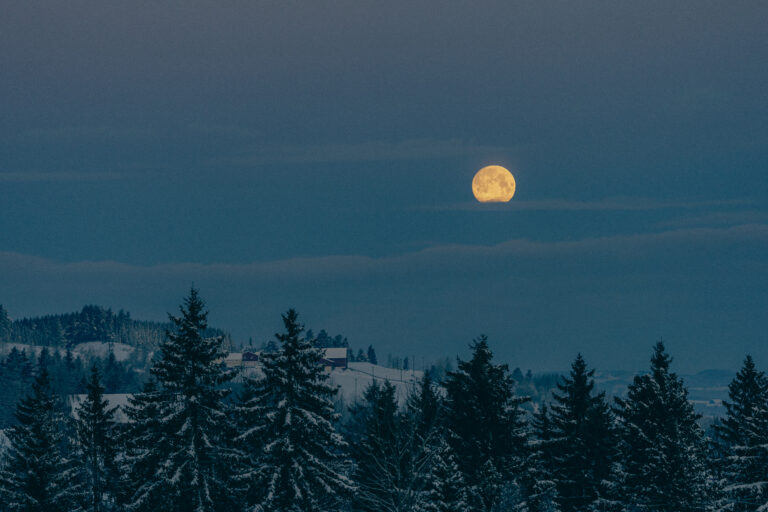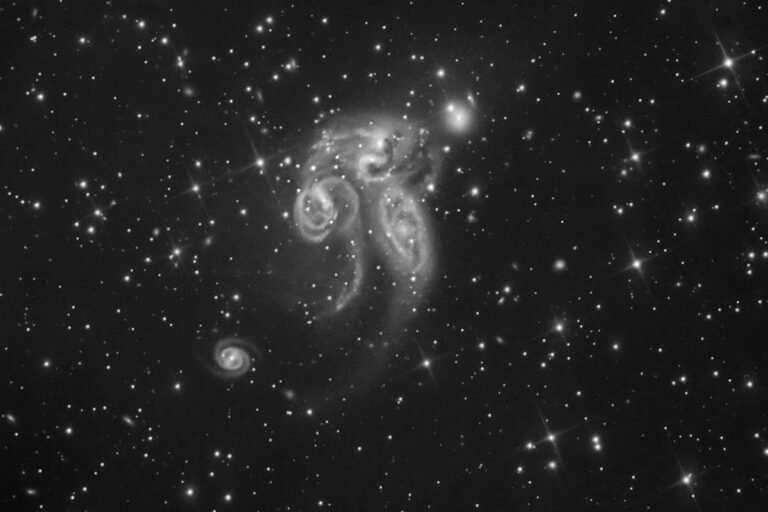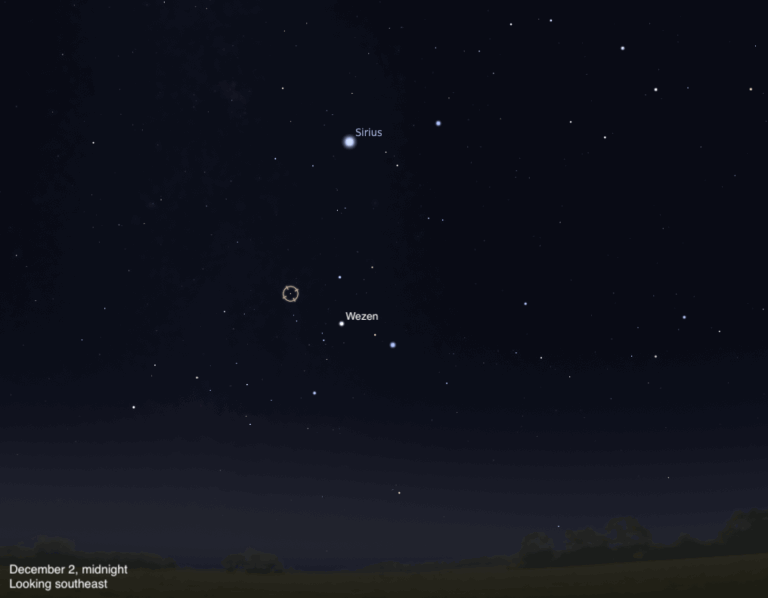Key Takeaways:
In the coming months, the buzz surrounding the August 21 total solar eclipse will reach a fever pitch. It will culminate in a cosmic spectacle that will captivate millions across the United States from Oregon to South Carolina. What would this event look like if we viewed it from the Moon? Satellite images showing the Moon’s shadow crossing Earth’s surface during previous solar eclipses give us a pretty good idea. But did you know that you can view an eclipse shadow in person, and in real time, by observing what astronomers refer to as a shadow transit of one of Jupiter’s moons?
In their orbital waltz, Jupiter’s four large satellites — Io, Europa, Ganymede, and Callisto in order of their orbital distances — frequently pass between the big planet and the Sun. When they do, they cast shadows that appear as small black dots traversing Jupiter’s cloud tops. Because of the moons’ relatively short orbital periods (1.8, 3.6, 7.2, and 16.7 days, respectively), shadow transits occur on an almost nightly basis. Callisto is the only one whose shadow can miss the planet. The outermost moon began a transit hiatus last year that will continue through late 2019. On occasion, two (and rarely three) moons simultaneously cast their shadows on the gas giant.
This month and next, a series of such double shadow transits are in the offing. The events below come from the Royal Astronomical Society of Canada’s Observer’s Handbook 2017, which provides the date and Universal Time for the moment when the second shadow first touches the cloud tops — the official beginning of the double transit. I’ve dropped those events not visible from North America and converted Universal Time to Eastern Daylight Time.
• May 11 at 9:59 p.m.
• May 18 at 11:54 p.m.
• May 26 at 1:47 a.m.
• May 27 at 8:16 p.m.
• June 2 at 3:42 a.m.
• June 3 at 10:21 p.m.
• June 19 at 10:04 p.m.
All but the double shadow transits of May 27 and June 3 involve Io and Europa. The Io-Europa double transits are brief (6 minutes) at first, lengthen to 130 minutes June 2, and then shorten again to 34 minutes for the final event. The May 27 and June 3 double transits featuring Io and Ganymede last 24 minutes and 120 minutes, respectively.
Viewing a shadow transit doesn’t require visiting an observatory. If seeing conditions are favorable, you can get a ringside seat with a common 60mm refractor and a magnification of 100x. You’ll get an even better view through a 4-inch or larger scope at magnifications of 150x or more.
Shadow transits — even doubleheaders like the ones I’ve highlighted — aren’t exactly what I’d call “wow!” events. A tiny black dot on Jupiter’s surface is hardly a pulse-pounding spectacle. Nevertheless, there’s something compelling about watching that dot move slowly across the jovian disk. The motion becomes especially obvious when you observe at 10- or 15-minute intervals. A single shadow transit typically takes between two and three hours.
Wouldn’t it be nice to travel to Jupiter and witness a solar eclipse on an almost daily basis? Before you decide to stow away on the next Jupiter-bound spacecraft, consider that such an exotic eclipse wouldn’t be nearly as spectacular as the earthly counterpart. By happenstance, our Moon shares the same angular size (about 30′) with the Sun. It barely covers the solar disk, allowing for stunning all-around views of the Sun’s spectacular corona.
From Jupiter, the solar disk measures a mere 6′ across, and all four big moons have larger angular sizes. Jupiter’s nearest moon, Io, spans 36′ (slightly bigger than our Moon from Earth). Both Europa and Ganymede appear half that size, and Callisto covers 9′. All you would see of the corona is a fairly small section of it at the beginning and end of totality.
If you’ve never seen a Jupiter shadow transit, take the time to check out one of the double headers listed. For a timetable of other shadow transits and satellite phenomena during 2017, consult the Observer’s Handbook.
Questions, comments, or suggestions? Email me at gchaple@hotmail.com. Next month: Make a lunar atlas with a small scope and cellphone.


